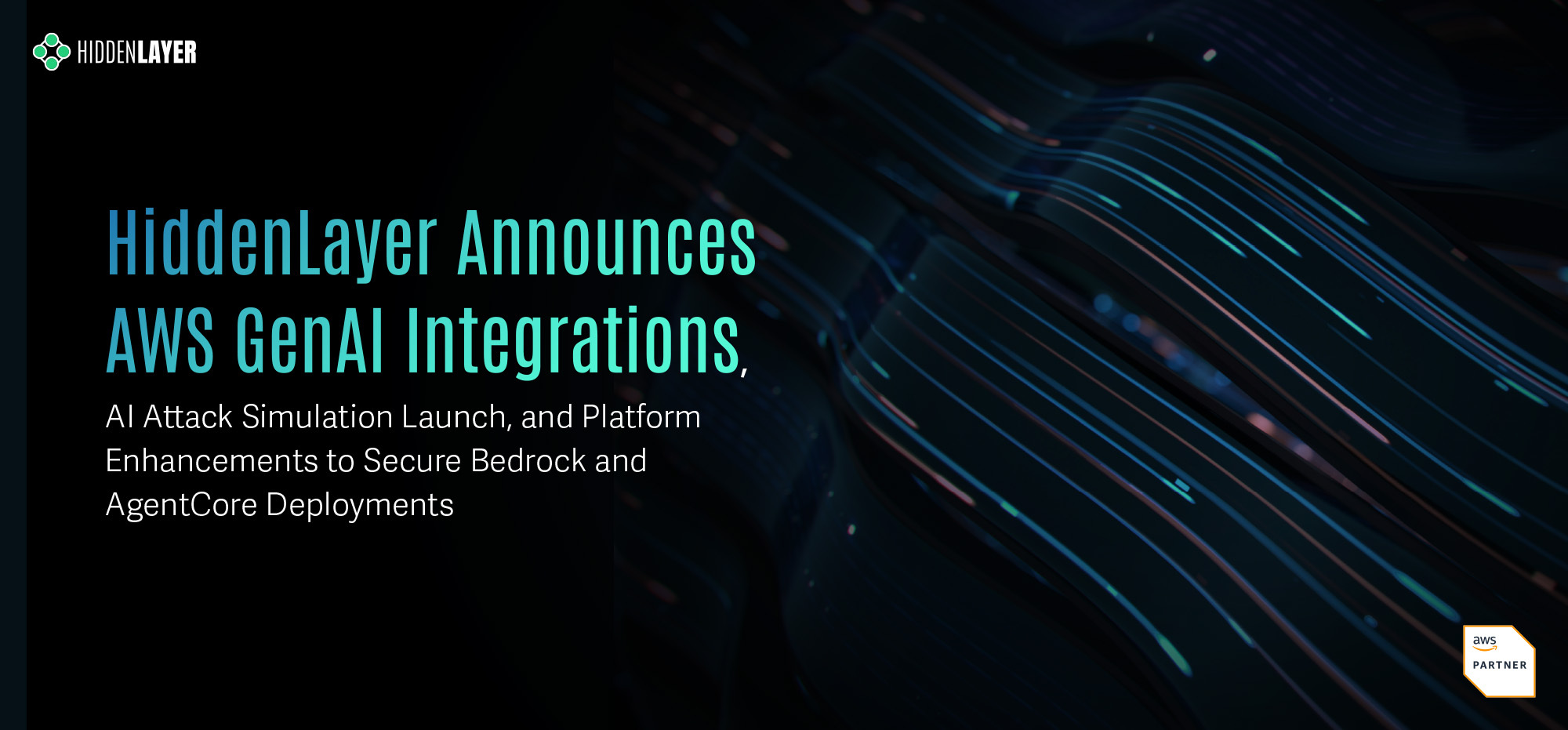Executive Summary
AI and ML systems are expanding the software attack surface in new and evolving ways, through model theft, adversarial evasion, prompt injection, data poisoning, and unsafe model artifacts. These risks can’t be fully addressed by traditional application security alone. They require AI-specific defenses integrated directly into the Software Development Lifecycle (SDLC).
This guide shows how to “shift left” on AI security by embedding practices like model discovery, static analysis, provenance checks, policy enforcement, red teaming, and runtime detection throughout the SDLC. We’ll also highlight how HiddenLayer automates these protections from build to production.
Why AI Demands First-Class Security in the SDLC
AI applications don’t just add risk; they fundamentally change where risk lives. Model artifacts (.pt, .onnx, .h5), prompts, training data, and supply chain components aren’t side channels. They are the application.
That means they deserve the same rigorous security as code or infrastructure:
- Model files may contain unsafe deserialization paths or exploitable structures.
- Prompts and system policies can be manipulated through injection or jailbreaks, leading to data leakage or unintended behavior.
- Data pipelines (including RAG corpora and training sets) can be poisoned or expose sensitive data.
- AI supply chain components (frameworks, weights, containers, vector databases) carry traditional software vulnerabilities and configuration drift.
By extending familiar SDLC practices with AI-aware controls, teams can secure these components at the source before they become production risks.
Where AI Security Fits in the SDLC
Here’s how AI security maps across each phase of the lifecycle, and how HiddenLayer helps teams automate and enforce these practices.
| SDLC Phase | AI-Specific Objective | Key Controls | Automation Example |
| Plan & Design | Define threat models and guardrails | AI threat modeling, provenance checks, policy requirements, AIBOM expectations | Design-time checklists |
| Develop (Build) | Expose risks early | Model discovery, static analysis, prompt scanning, SCA, IaC scanning | CI jobs that block high-risk commits |
| Integrate & Source | Validate trustworthiness | Provenance attestation, license/CVE policy enforcement, MBOM validation | CI/CD gates blocking untrusted or unverified artifacts |
| Test & Verify | Red team before go-live | Automated adversarial testing, prompt injection, privacy evaluations | Pre-production test suites with exportable reports |
| Release & Deploy | Apply secure defaults | Runtime policies, secrets management, secure configs | Deployment runbooks and secure infra templates |
| Operate & Monitor | Detect and respond in real-time | AIDR, telemetry, drift detection, forensics | Runtime blocking and high-fidelity alerting |
Planning & Design: Address AI Risk from the Start
Security starts at the whiteboard. Define how models could be attacked, from prompt injection to evasion, and set acceptable risk levels. Establish provenance requirements, licensing checks, and an AI Bill of Materials (AIBOM).
By setting guardrails and test criteria during planning, teams prevent costly rework later. Deliverables at this stage should include threat models, policy-as-code, and pre-deployment test gates.
Develop: Discover and Scan as You Build
Treat AI components as first-class build artifacts, subject to the same scrutiny as application code.
- Discover: model files, datasets, frameworks, prompts, RAG corpora, and container files.
- Scan:
- Static model analysis for unsafe serialization, backdoors, or denial-of-service vectors.
- Software Composition Analysis (SCA) for ML library vulnerabilities.
- System prompt evaluations for jailbreaks or leakage.
- Data pipeline checks for PII or poisoning attempts.
- Container/IaC reviews for secrets and misconfigurations.
- Static model analysis for unsafe serialization, backdoors, or denial-of-service vectors.
With HiddenLayer, every pull request or CI job is automatically scanned. If a high-risk model or package appears, the pipeline fails before risk reaches production.
Integrate & Source: Vet What You Borrow
Security doesn’t stop at what you build. It extends to what you adopt. Third-party models, libraries, and containers must meet your trust standards.
Evaluate artifacts for vulnerabilities, provenance, licensing, and compliance with defined policy thresholds.
HiddenLayer integrates AIBOM validation and scan results into CI/CD workflows to block components that don’t meet your trust bar.
Test & Verify: Red Team Before Attackers Do
Before deployment, test models against real-world attacks, such as adversarial evasion, membership inference, privacy attacks, and prompt injection.
HiddenLayer automates these tests and produces exportable reports with pass/fail criteria and remediation guidance, which are ideal for change control or risk assessments.
Release & Deploy: Secure by Default
Security should be built in, not added on. Enforce secure defaults such as:
- Runtime input/output filtering
- Secrets management (no hardcoded API keys)
- Least-privilege infrastructure
- Structured observability with logging and telemetry
Runbooks and hardened templates ensure every deployment launches with security already enabled.
Operate & Monitor: Continuous Defense
Post-deployment, AI models remain vulnerable to drift and abuse. Traditional WAFs rarely catch AI-specific threats.
HiddenLayer AIDR enables teams to:
- Monitor AI model I/O in real time
- Detect adversarial queries and block malicious patterns
- Collect forensic evidence for every incident
- Feed insights back into defense tuning
This closes the loop, extending DevSecOps into AISecOps.
HiddenLayer Secures AI Using AI
At HiddenLayer, we practice what we preach. Our AIDR platform itself undergoes the same scrutiny we recommend:
- We scan any third-party NLP or classification models (including dynamically loaded transformer models).
- Our Python environments are continuously monitored for vulnerabilities, even hidden model artifacts within libraries.
- Before deployment, we run automated red teaming on our own detection models.
- We use AIDR to monitor AIDR, detect runtime threats against our customers, and harden our platform in response.
Security is something we practice daily.
Conclusion: Make AI Security a Built-In Behavior
Securing AI doesn’t mean reinventing the SDLC. It means enhancing it with AI-specific controls:
- Discover everything—models, data, prompts, dependencies.
- Scan early and often, from build to deploy.
- Prove trust with provenance checks and policy gates.
- Attack yourself first with red teaming.
- Watch production closely with forensics and telemetry.
HiddenLayer automates each of these steps, helping teams secure AI without slowing it down.
Interested in learning more about how HiddenLayer can help you secure your AI stack? Book a demo with us today.




